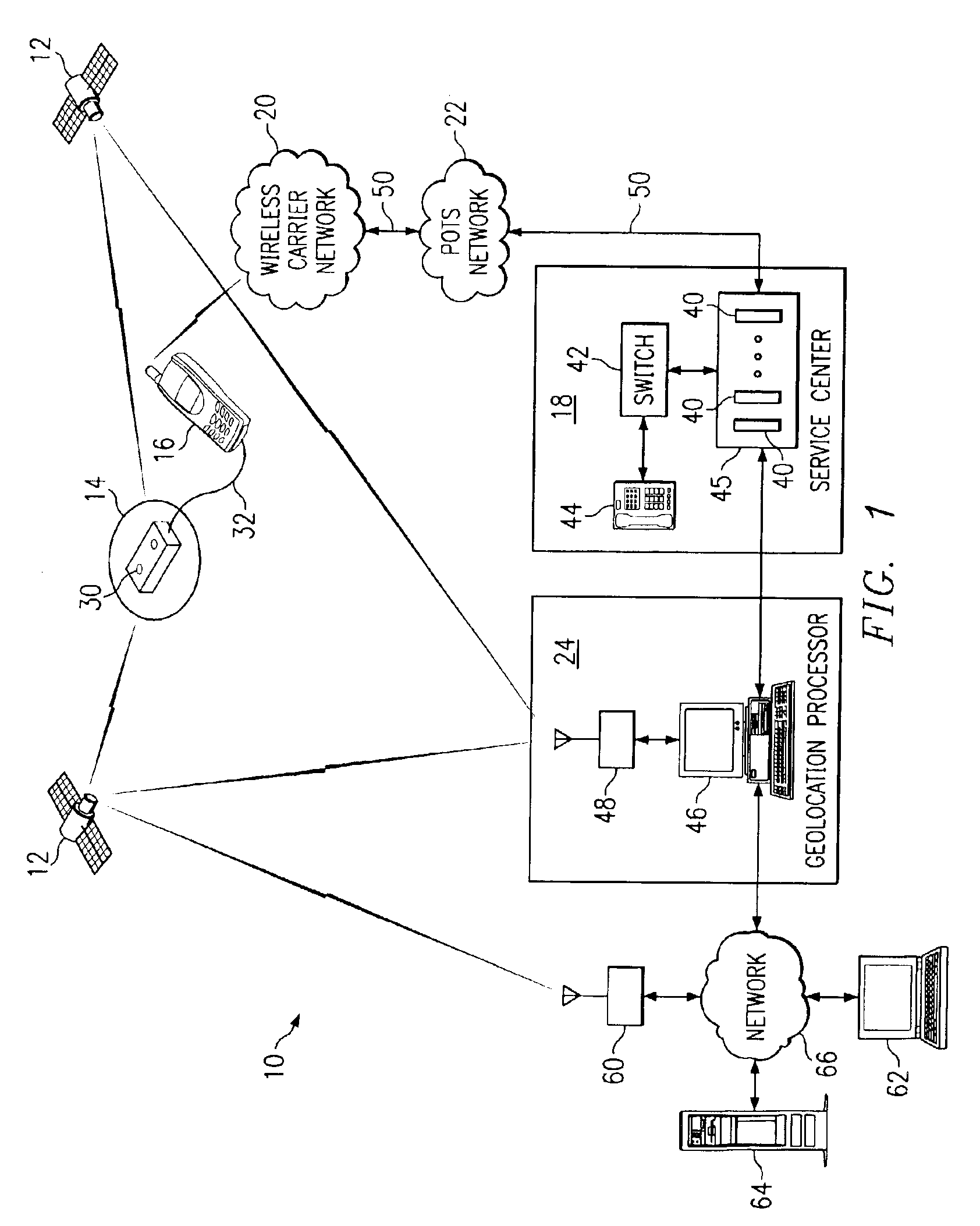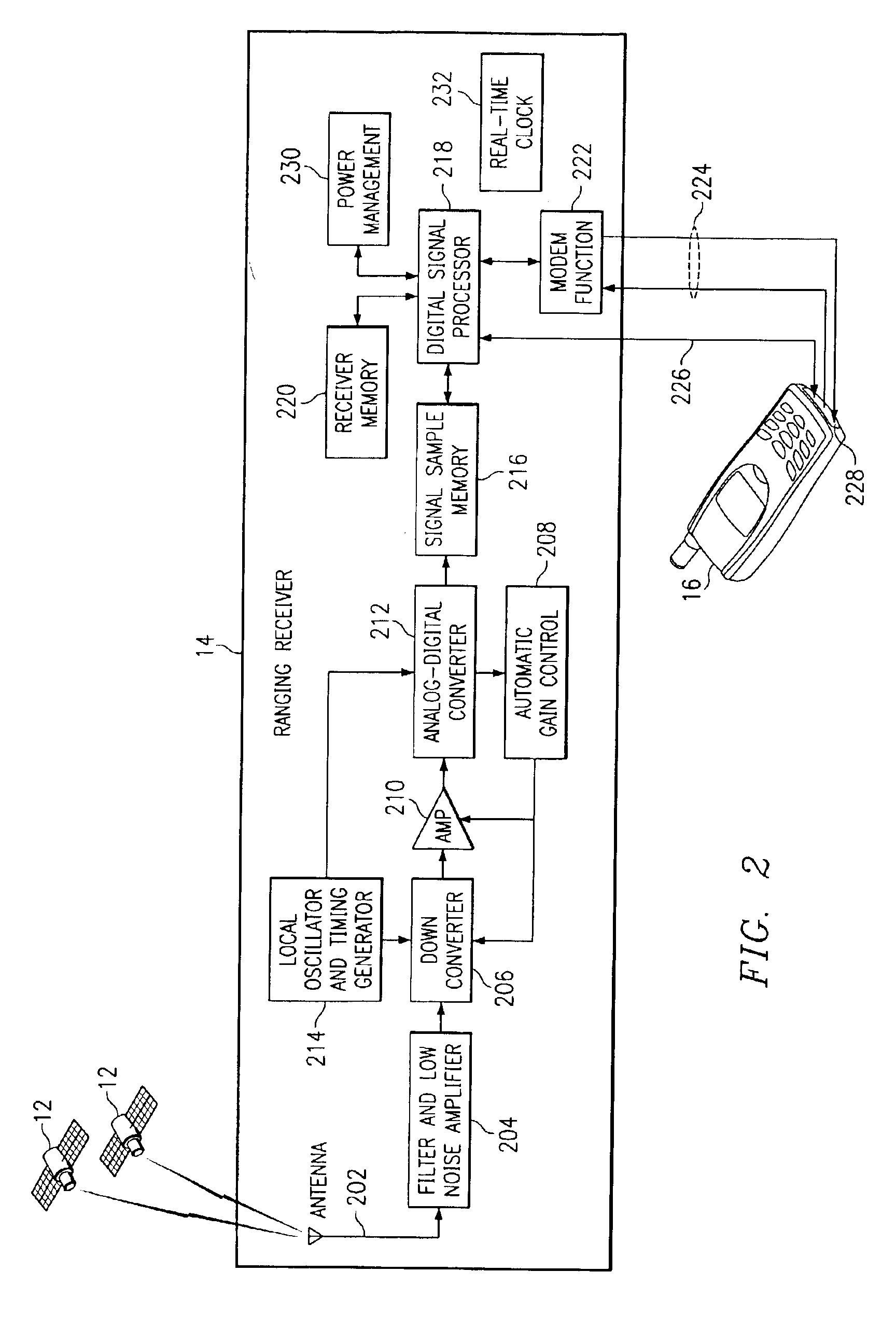Method and system for processing positioning signals based on predetermined message data segment
- Summary
- Abstract
- Description
- Claims
- Application Information
AI Technical Summary
Benefits of technology
Problems solved by technology
Method used
Image
Examples
Embodiment Construction
[0041]FIG. 1 is a block diagram illustrating a remote geolocation system 10 in accordance with one embodiment of the present invention. The system 10 may comprise a global positioning system (GPS), a global navigation satellite system (GLONASS), or other suitable navigation system.
[0042]The system 10 comprises a plurality of positioning signal transmitters 12 and at least one ranging receiver 14. The positioning signal transmitters 12 are operable to transmit positioning signals, and each ranging receiver 14 is operable to receive the positioning signals and to perform geolocation processing functions in order to determine a pseudorange estimate for the ranging receiver 14 based on the received signals. As used herein, “each” means every one of at least a subset of the identified items. In the illustrated embodiment, the positioning signal transmitters 12 comprise satellites 12. Thus, as used herein, “satellites” means conventional satellites, pseudolites, or other suitable position...
PUM
 Login to View More
Login to View More Abstract
Description
Claims
Application Information
 Login to View More
Login to View More - R&D
- Intellectual Property
- Life Sciences
- Materials
- Tech Scout
- Unparalleled Data Quality
- Higher Quality Content
- 60% Fewer Hallucinations
Browse by: Latest US Patents, China's latest patents, Technical Efficacy Thesaurus, Application Domain, Technology Topic, Popular Technical Reports.
© 2025 PatSnap. All rights reserved.Legal|Privacy policy|Modern Slavery Act Transparency Statement|Sitemap|About US| Contact US: help@patsnap.com



